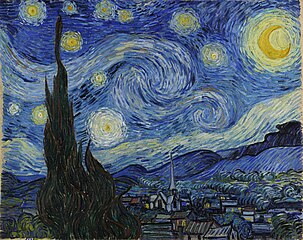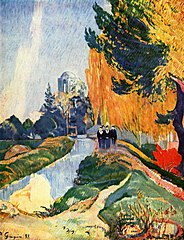Maria Popova at Brainpickings posted a video recently of Neil deGrasse Tyson commenting on how creativity and originality work differently in the sciences and arts. I think Tyson is wrong. There are a lot more similarities between the sciences and arts than Tyson suggests and I think the perceived differences have more to do with an idealization of the arts and a fundamental misunderstanding of what the arts are and how artists work.
I have often given great thought to the relationship between arts and sciences. It’s not surprising when you consider that I grew up in a home drenched in the arts. My mother is an artist, my father often worked in the arts, I am the only one of three siblings (including my identical twin) who is not active in the visual arts. Oh, and my wife also happens to have degrees in the fine arts, art theory, and, soon, museum sciences. I didn’t end up in the visual arts like other family members. I found my artistic outlet in music, and making music has been a particular passion of mine ever since my teens. But, where did I end up professionally? In the social sciences. So, I think I have a pretty good perspective on matters related to creativity and originality in the sciences and arts, and my sense is that they are very much the same.
In the video, Tyson says that a discovery not made by him (or any specific scientist) would eventually be made by another scientist. In the arts, on the other hand, Van Gogh’s “Starry Night”, would not have been painted if Van Gogh himself had not painted it. Tyson concludes that,
… the arts are more individual to the creative person than a scientific idea is to the one who comes up with it…
But, even if Van Gogh had not painted “Starry Night”, it’s very likely that someone would have done something similar; at least displaying many of the novel elements that fascinate us that Van Gogh incorporated in his painting. Indeed, many of those elements are suggested in the works of Van Gogh’s contemporaries, including, Cézanne, who is regarded as the leader of the break from the impressionists that opened the door for artists like Van Gogh to do what they did, the pointillists (ex. Seurat & Signac), Toulouse-Lautrec (who’s portrait of Van Gogh hints at many of the stylistic elements that Van Gogh would become known for), and of course Gauguin with whom Van Gogh had an infamous relationship. Essentially, everything was in place for a painting like “Starry Night” to be created and to be accepted. What Van Gogh managed to do was to express the creative idea that was already emerging from the artistic dialogue of that time in the right place and in an acceptable manner.
There are two mistakes that Tyson makes in regards to creativity in the arts. The first is a common one; he overlooks the fact that artists, like scientists, do not work in isolation. Rather, they are engaged in dialogue with other artists, much the same way as scientists are amongst themselves. The difference is that artists express their dialogue through their artistic works, exhibitions, etc., while scientists express theirs in journals and conferences. A scientific idea that gains currency is the one that manages to express what is emerging from the ongoing dialogue in a reasonable and understandable manner; which is exactly what Van Gogh did when he painted “Starry Night”.
The second, suggested by my wife, is that he fails to recognize how our knowledge of the history of the arts is constructed. The official history of the arts has been very selective. Perhaps this is because individual works of art and exhibitions are not as effective a means of documentation as journal articles and conference proceedings are. Whatever the reason, art historians have tended to elevate specific individuals to “stardom” while relegating many of their contemporaries into obscurity by means of relative silence. The best example of this is women in the arts. Until just a few decades ago, the documented history of the visual arts (and many other arts) led people to reasonably conclude that there were only a handful of notable female artists over the last century. A close re-examination of this history is revealing a very different picture. Women have been very active in the arts for many centuries and many of them quite influential. In fact, it has been discovered that some paintings that were at one time attributed to Frans Hals, an often cited influence on Van Gogh, were actually painted by Judith Leyster (they were deliberately falsified).
Artists and scientists have a common goal; it is to effectively describe the world that we experience. They have to make do with the tools that are at their disposal in any given context to come up with meaningful expressions of that reality. That’s where the creativity comes in and, as far as I can tell, there is very little difference in how this is done. Consider the discovery of the double helix model of DNA. At the time that the discovery was made a lot was known about how DNA works and, in that context, a helix model made considerable sense. Several scientists had, in fact, already tried to come up with explanations that were based on a helix model (a triple helix model had already been suggested). Operating within that dialogue, Watson and Crick came up with the double helix expression that managed to address outstanding issues. In the same manner, artists of Van Gogh’s time had been experimenting with a range of ways to express their experiences of reality, creating a language that, ultimately, Van Gogh was able to use to great effect.







2 Responses to Originality in arts vs. sciences: I disagree with Neil deGrasse Tyson.